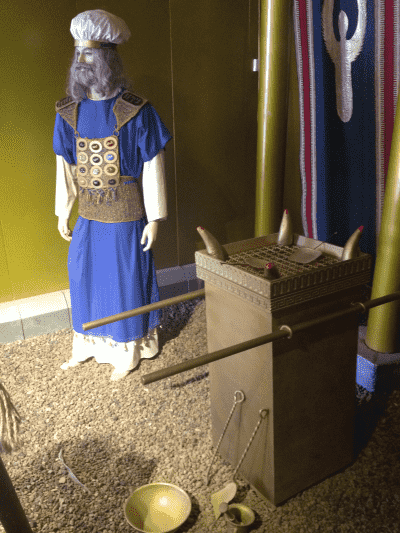Where was the Altar of Incense Located?
In Hebrews 9:3-4 we are told that the Holy of Holies (aka Most Holy Place) contained the golden altar of incense and the ark of the covenant. This Holy of Holies was entered only once a year on the Day of Atonement by the High Priest (Heb 9:7; cf. Lev 16). However, we see from other Scriptures that the altar of incense was used much more frequently than once a year (cf. Lev 4:7; Exod 30:7-8). In fact, in God’s instructions for the altar of incense, Israel was instructed to put the altar of incense outside of the Holy of Holies, separated from the Holy of Holies by a curtain (cf. Exod 30:6; 40:5). How are we to understand these apparent contradictions about the placement of the altar of incense?

Although there are a variety of ways people have dealt with this issue, I believe the best solution is to understand the reference to the altar of incense in Hebrews 9:4 as a theological statement rather than a statement about location.
The description of the altar of incense in the Old Testament clearly places the altar outside of the Holy of Holies, and it is unlikely those in charge of temple service would be able to get away with such a clear locational mandate. Furthermore, the descriptions of the altar of incense in the Old Testament are given with special attention to the altar’s relationship to the Holy of Holies (cf. Exod 30:6; 40:5). The incense offered daily would float into the Holy of Holies. So, it makes sense theologically for the altar to be associated with the Holy of Holies since the altar of incense symbolizes the prayers of the people drifting up before God. The close relationship between the altar of incense and the Holy of Holies is also confirmed by 1 Kings 6:22, where it is clearly stated that the altar of incense belongs to the Holy of Holies.
Although there could be a variety of ways to understand Hebrews 9:4, I think understanding the statement theologically fits best with how the author of Hebrews tends to argue. Additionally, this view also fits best with the clear Old Testament evidence.
2 Comments
Jim Goodew
I love your site Peter!
I did a Google search on altar of incense and your good article came up! I bookmarked your site :) and plan to come back!
Thanks for serving the Lord! Hope you and your family have a wonderful Christmas celebrating the King’s coming!
Jim Goodew
Peter Goeman
So good to hear from you, and thanks for reading! Blessings to you and the family.